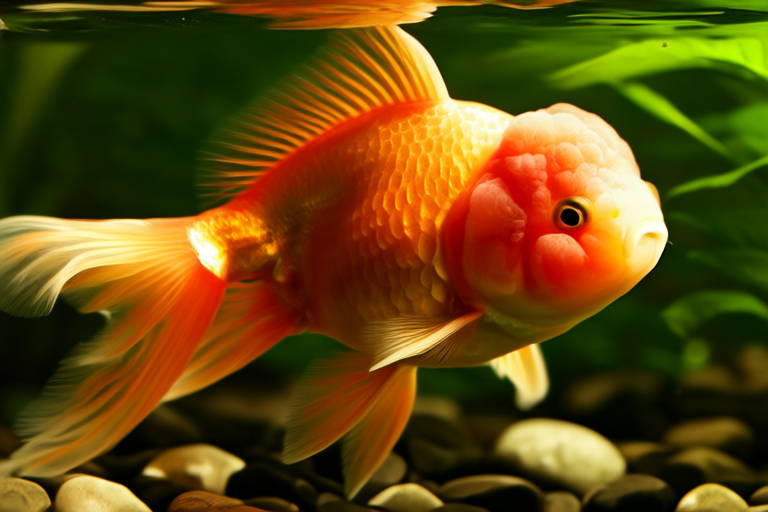Understanding Goldfish Behavior: A Comprehensive Guide
Goldfish are fascinating creatures with a wide range of behaviors that can be both entertaining and insightful for their owners. By understanding these behaviors, you can better care for your fish and provide them with an enriched environment. This guide will cover various aspects of goldfish behavior, including body language, swimming patterns, feeding habits, social interactions, and environmental responses.
Body Language
Goldfish communicate through subtle body movements that can reveal their mood or health status. For instance, a relaxed goldfish will swim gracefully with its fins spread out, indicating it is content and healthy. However, if a goldfish appears sluggish or lethargic, it may be a sign of illness or stress.
One of the most noticeable signs of distress in goldfish is gasping at the surface of the water. This behavior suggests that the fish is struggling to get enough oxygen. In such cases, it’s crucial to check the water quality and temperature. Maintaining optimal conditions can prevent this behavior and promote a healthier living environment for your goldfish.
Swimming Patterns
Observing your goldfish’s swimming patterns can provide valuable insights into their well-being. Healthy goldfish typically swim with ease, gliding smoothly through the water. However, erratic swimming or sudden bursts of speed might indicate excitement or fear. For example, if your goldfish suddenly darts around the tank, it could be reacting to a new object or movement outside the aquarium.
Another common swimming pattern is circling the tank. While some goldfish may circle as part of their natural exploration, persistent circling can signal that something is amiss. It could be due to poor water conditions, overcrowding, or even bullying from other fish. Ensuring a clean and spacious tank can help alleviate these issues.
Feeding Habits
Goldfish have voracious appetites and will often beg for food whenever they see their owner. However, overfeeding can lead to health problems, so it’s essential to feed them appropriately. A good rule of thumb is to offer small portions twice a day, ensuring they finish within a few minutes. Overfeeding can cause bloating and constipation, which may manifest as floating sideways or difficulty swimming.
Goldfish also exhibit interesting feeding behaviors when presented with food. Some may approach the surface eagerly, while others may remain cautious, observing their surroundings before taking a bite. These differences in behavior can depend on factors like past experiences, tank mates, and individual personalities.
Social Interactions
Goldfish are generally peaceful and can live harmoniously with other compatible species. However, introducing new fish to an established tank requires careful consideration. Goldfish can become territorial, especially if space is limited or resources are scarce. To avoid conflicts, it’s best to introduce new fish gradually and monitor their interactions closely.
In a community tank, goldfish may form hierarchies based on size and dominance. Larger fish often assert their authority by chasing smaller ones or blocking access to food. If you notice aggressive behavior, consider separating the fish or providing more hiding spots to reduce stress.
Environmental Responses
Goldfish are highly sensitive to changes in their environment, and their behavior can reflect these shifts. For instance, fluctuations in water temperature or pH levels can affect their activity levels. If the water becomes too cold, goldfish may become less active and spend more time near the bottom of the tank. Conversely, warmer temperatures can increase their energy levels and encourage more frequent swimming.
Lighting also plays a role in goldfish behavior. They tend to be more active during daylight hours, but prolonged exposure to bright lights can stress them out. Providing a consistent light schedule and ensuring proper filtration can help maintain a stable environment for your goldfish.
Tips for Owners
To interpret your goldfish’s actions accurately, it’s important to observe them regularly and note any changes in behavior. Keep a journal detailing feeding times, water parameters, and notable events to help identify potential causes for unusual behavior.
If you suspect your goldfish is unwell, consult with a veterinarian specializing in aquatic animals. Early intervention can make a significant difference in treating illnesses and improving overall health.
Lastly, remember that each goldfish has its unique personality. Spend time getting to know your fish and learning what makes them happy. With patience and care, you’ll develop a strong bond with your aquatic companions.
Anecdote: The Curious Case of Charlie
I once had a goldfish named Charlie who displayed peculiar behavior. Every morning, he would swim up to the glass and tap his nose against it, as if asking for attention. At first, I thought it was just coincidence, but after a few days, I realized he was responding to my presence. Whenever I approached the tank, Charlie would start tapping, and I began to reward him with a small treat. Over time, this became our morning routine, and it was heartwarming to see how responsive he was to my actions.
Conclusion
Understanding goldfish behavior is key to providing them with a happy and healthy life. By paying attention to their body language, swimming patterns, feeding habits, social interactions, and environmental responses, you can better meet their needs and enjoy a rewarding relationship with your aquatic friends. Remember, every goldfish is unique, and spending time observing them can deepen your connection and enhance their wellbeing.
